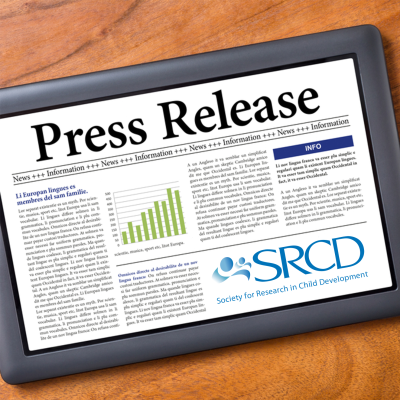Comparison of Immigrant Children in Four Nations Shows Strengths, Lags
PRESS RELEASE / CHILD DEVELOPMENT: Embargoed for Release on September 11, 2012
Young children whose families immigrate to Australia, Canada, the United Kingdom, and the United States are as prepared and capable of starting school as their native-born counterparts, with one exception—vocabulary and language development. That’s the finding of a new study published in the September/October 2012 issue of the journal Child Development in a special section on the children of immigrants.
The study was conducted by researchers at the University of Bristol, Columbia University, the London School of Economics and Political Sciences, the University of New South Wales, the University of Ottawa, and the Institute for the Study of Labor (IZA), an independent research institute. “In spite of important differences in some of the resources immigrant parents have to invest in their children, and in immigrant selection rules and settlement policies, across the four countries there are significant similarities in the relative positions of 4- and 5-year-old children of immigrants,” notes Elizabeth Washbrook, lecturer in education at the University of Bristol, who led the study.
“The differences between immigrant families according to their home language are more striking than the differences across countries, with children of immigrants doing worse than their counterparts with native-born parents on vocabulary tests, particularly if a language other than the official language is spoken at home,” Washbrook continues. “But these second-generation immigrants are not generally disadvantaged in nonverbal cognitive domains, nor are there notable behavioral differences, which suggests that the cross-country differences in cognitive outcomes during the teen years documented in the existing literature are much less evident during the early years.”
Specifically, the children studied did as well in the areas of hyperactive and antisocial behaviors, aggressive behavior, and nonverbal skills as their counterparts who had native-born parents. According to Washbrook, this suggests that, “in spite of sometimes crucial differences in their backgrounds, the process of child development in immigrant families is such that children receive, on average, a start in life that puts them on par with other children—with the one exception of language.”
This finding contrasts with research on older second-generation immigrants which has shown, for example, that second-generation teens in Canada and Australia perform as well or even better than teens of native-born parents in reading, math, and science tests, while second-generation teens in the United Kingdom and the United States tend to perform worse in these areas than their peers who have native-born parents.
The study used similar large-scale longitudinal datasets from each of the four countries to study more than 40,000 children born in the first four years of the 2000s. While all four of the countries have historically been immigrant-receiving nations with common cultural, demographic, and labor market characterisitcs, there are important differences among them in the way in which immigrants are selected, their settlement policies, and their more general schooling, family, and labor market policies.
“Our findings suggest that, to the extent cross-country differences exist across a wide range of cognitive skills in later years, these reflect not so much disadvantages during the preschool years, but rather differences in the capacity of social institutions―particularly the education system―to help children overcome their initial disadvantage in language skills, the single hurdle that is beyond the capacity of some of their parents,” Washbrook explained.
The study was funded by the Australian Research Council, the Eunice Kennedy Shriver National Institute of Child Health and Human Development, the Russell Sage Foundation, and the Sutton Trust, with support from Statistics Canada. The Longitudinal Study of Australian Children is conducted in partnership between the Department of Families, Housing, Community Services, and Indigenous Affairs, the Australian Institute of Family Studies, and the Australian Bureau of Statistics.
###
Summarized from Child Development, Volume 83, Issue 5, The Development of Young Children of Immigrants in Australia, Canada, the United Kingdom, and the United States by Washbrook, E (University of Bristol), Waldfogel, J (Columbia University and London School of Economics), Bradbury, B (University of New South Wales), Corak, M (University of Ottawa and IZA), and Ghanghro, AA (University of Ottawa). Copyright 2012 The Society for Research in Child Development, Inc. All rights reserved.


